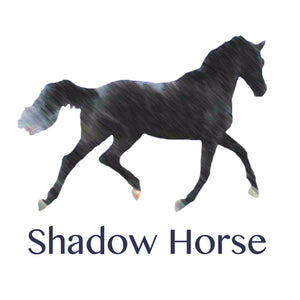Full article text:
EXPRESS YOURSELF!!
Courtesy of retailer Shadow Horse, international dressage rider Maria Eilberg gives readers her top tips on developing cadence and expression in your horse’s paces.
“Developing cadence and expression in your horse’s paces has to be done carefully, so as to avoid tension creeping in and ruining the overall picture and paces. You also need to be wary of pushing your horse out of his natural rhythm and confusing energy with speed.
You can’t manufacturer a horse’s paces, but you can improve something quite average and make it more expressive by introducing certain exercises into your flatwork at home.
The most important starting point is to ensure that your horse is in front of your leg, so once you have warmed up the horse in walk, you can think about getting your horse listening to your leg aid. Even in the warm-up trot and canter, make sure that your horse is off your leg and if he isn’t remind him with a sharp kick. Once he reacts, let your leg lay still and reward him. In the canter, ask for some bigger strides and again ensure that your horse is listening.
Once your horse has warmed up properly, then you should think about riding lots of transitions, from walk-trot-walk, trot-canter-trot and so on, making sure that your horse ‘jumps off your leg aid’
I probably ride hundreds of transitions when I ride, because it really does help the horse engage his hind leg and create more energy and thus more expression within the paces. A good exercise to ride is to go from working trot to medium trot and back again. Do this all in rising trot if you have any tension in your seat but if your seat is independent, then you can ride working trot in sitting then rise in the medium trot. Think about really ‘opening’ up the trot in the medium, and then using half halts, bring the horse into working trot again.
Remember to really ride your corners too, as these are great for rebalancing the horse and engaging the hind leg.
Working on paces within the paces can really help create a spring to your horse’s step. Riding working trot –medium- working trot and working canter-medium- working canter is great for getting the horse to propel himself along from his hindquarters and get him off your leg. If your horse is lazy, then make sure that you haven’t got into the habit of nudging with the leg all the time to keep him moving. A short sharp kick every now and again is better than constant nagging, which will make your horse switch off to the leg aid.
If your horse is tense, this can affect your horse’s paces, so make sure that you keep your horse soft and supple in your training by riding circles and changing the bend. Counter flexing (flexing the horse’s head and neck to out outside of the circle) on a 20 metre circle can help correct a horse which falls in through the shoulder on the circle, straighten up the horse and keep the horse soft through his back, by ensuring that he doesn’t become rigid in his contact. On the subject of contact, you need to think of an elastic feel, which is always existing, but not restrictive. Hard hands and poor riding will of course create tension, so make sure you focus on your position too!
Lateral work is also a great way to develop your horses power, but be careful not to get stuck, by asking too much too early on in your horse’s training and remember not to lose that forward momentum in the lateral movements. If you are riding leg yield in trot and your horse starts to get behind the leg, straighten him up and then ask for some medium strides and then half halt and bring him back to working trot and start leg yield again. It is better to get a few good strides of lateral work than a whole long side of bad!
Finally remember that because you are asking more of your horse, he may tire quicker than normal, so make sure you have plenty of walk breaks and build up slowly

